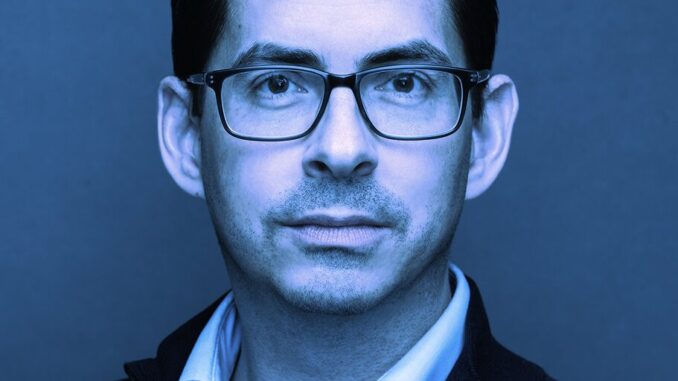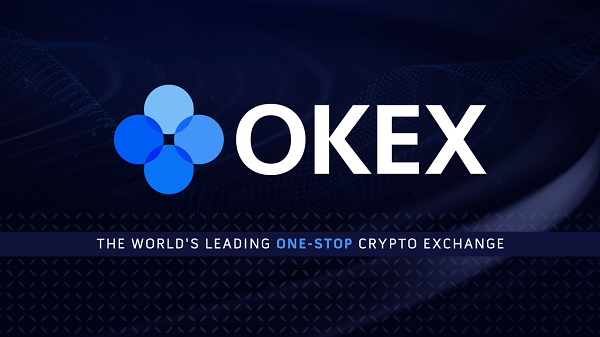
In brief
Circle’s CFO Jeremy Fox-Geen said the firm is a registered financial services company just like PayPal or Apple.
Circle Yield, the firm’s interest-earning product, is regulated by the Bermuda Monetary Authority (BMA).
Fox-Geen expects Circle to go public via a SPAC deal at the end of 2022.
Amid concerns that USDC would fall to similar liquidity issues as Terra’s stablecoin, Circle’s chief financial officer Jeremy Fox-Geen sat down with Decrypt to demystify how the market’s second-largest stablecoin operates.
Last week, Circle, the company behind the stablecoin, released its first monthly full breakdown of the assets backing the token.
The stablecoin provider highlighted that its USDC reserve is now held exclusively in cash and three-month U.S. Treasury bonds and is wholly separate from the firm’s operations.
Per the firm’s report, the total amount of USDC in circulation as of June 30 was 55,569,519,982 tokens, while reserve assets backing the U.S. dollar-pegged coin totaled $55.7 billion.
Of this amount, Circle had $13.58 billion in cash at regulated U.S. banks, such as Silvergate Bank, Bank of New York Mellon, and Silicon Valley Bank, among others. Another $42.1 billion is currently held in treasury bonds.
The disclosure came a little over a week after the firm’s CEO Jeremy Allaire hit back at rumors that USDC would go the way of Terra, stating that financially the Boston-based company “is in the strongest position it has ever been.”
This is what Fox-Geen affirmed with Decrypt, pointing out that Circle is a U.S. registered financial services company operating under the same regulatory framework that applies to payment companies like Apple with its Apple Pay product, PayPal, the operator of mobile payment service Venmo, or Block with its Cash App service.
“The framework we operate under is widely trusted. It is used by the largest payments companies and protects hundreds of tens if not hundreds of millions of individuals with billions of dollars of money in these systems,” said Fox-Geen.
The Terra implosion and liquidity crisis
Responding to claims that Circle is losing money because the company is paying incentives to its reserve holders, with some of them using those funds to mint fresh USDC tokens, Fox-Geen said that “the crypto term for [such allegations] would be FUD (Fear, Uncertainty, Doubt), … much of which is not just speculative, but is inaccurate.”
“These are absurd rumors, and the people who wrote them don’t understand how banks work. Circle does not pay any banks to hold fiat currency. That’s not how banks work. Banks pay their customers interest to receive that fiat currency,” he said.
According to him, even if Circle had such an arrangement with a bank, that arrangement would have been thoroughly documented and disclosed in the company’s public SEC filings, which can be downloaded from the regulator’s website.
“If it’s not there, it’s because it doesn’t exist, because if it existed, as a U.S. financial services company under registration with the SEC, we have to disclose it subject to penalties, including on the officers of the company personally,” said Fox-Geen, adding that “literally everything material about our companies have been documented and fully disclosed.”
Circle’s CFO agreed, though, that people’s concerns can probably be justified after the meltdown of the Terra ecosystem and the liquidity crisis many firms now face. That’s because USDC is also often used by those companies in their operations.
Recent headwinds for the industry started with the dramatic collapse of sister tokens Luna and UST in May, which resulted in at least $55 billion of investors’ wealth being wiped out from the market. In the ensuing weeks, crypto lending company Celsius froze withdrawals from its platform and ultimately filed for bankruptcy, with crypto brokers Three Arrows Capital and Voyager Digital dealing with similar woes.
Fox-Geen, however, denied that Circle has any exposure to those companies since the law “unambiguously requires that the USDC reserves can only be held in a certain set of instruments.”
“We are not allowed to lend them, borrow against them, or use them to pay our bills. The reserve is held in segregated accounts for the benefit of USDC customers, and under money transmission laws,” said Fox-Geen. “And under the U.S. Bankruptcy Code, the USDC reserve is afforded all of the protections that are available that are under those laws and regulations given to every other large mainstream payments.”
When asked whether any crypto lending companies have ever approached Circle with requests to borrow from its USDC reserves, Jeremy said that although he’s only been at the company for 18 months, he is not aware of anything like that happening in the history of the stablecoin.
“And [Circle] has always been clear that the USDC reserve cannot be used for any other purpose,” said Fox-Geen.
Unpacking ‘Circle Yield’
He also stressed that Circle Yield, the company’s short- and long-term yield interest rate product for institutional investors, would probably be the first foray into the digital asset markets for many Circle customers.
With such clientele in tow, the company wanted to ensure that it was supervised and regulated and “to make sure that it took as little risk as possible,” he said.
“Circle Yield is issued as an unregistered security under the U.S. securities law, which is how these products need to be issued,” said Fox-Geen. “And if we dig deeper, you’ll see that the SEC or state regulators have sanctioned many people for issuing yield products that are not following the laws of the United States… So we had to find a regulator who was able to regulate a digital asset or any lending product.”
Crypto lending companies, including Celsius and BlockFi, have been targeted by the SEC and regulators in New York, New Jersey, Texas, and other states since last year, with cease-and-desist letters issued or hefty fines paid.
Notably, the actual regulator overseeing Circle Yield is the Bermuda Monetary Authority (BMA), whom Fox-Geen described as a “forward thinking” and “one of the most respected offshore financial regulators” that helps the company “to withstand the scrutiny of the most demanding customers.”
Circle Yield’s core feature is that the offering is said to be fully secured with Bitcoin.
The product is also over-collateralized, stressed Fox-Geen, which “is not how most borrowing and lending businesses in crypto or in digital assets work.”
But what is over-collateralization and how does it work?
“When we lend that USDC to our borrowing customer, the borrowing customer gives us 125% of the value of the loan in Bitcoin, which is held in an independent collateral agent with a fully perfected security interest,” he explained.
If there were ever a default on the loan, Circle would thus be entitled to that Bitcoin.
This, in turn, begs the question what happens if the price of Bitcoin falls?
To secure the over-collateralization, Circle says it uses margin calls, which, as detailed by Fox-Geen, occur twice a day, seven days a week.
“If Bitcoin was to fall from the 125%, for example, down to 100%, or lower, we would then make a margin call to the customers to whom we have lent USDC. And they would then deposit more Bitcoin that we have to take the collateral back to 125%. Similarly, if Bitcoin goes up, they can have some of their collateral back to sustain it at 125%,” he said.
Amid the latest volatility in crypto markets, Fox-Geen said that this mechanism “performed exactly as it was supposed to perform all the way through the tunnel.”
Margin calls were met on time” flawlessly,” Circle Yield remained over-collateralized all the time, and customers suffered no losses.
He also acknowledged that Circle Yield’s current rates—which dropped from the initial 10.75% in November 2020 to a mere half a percent on both short and long fixed-income terms —are “not very attractive” and that right now, “there is very little borrowing demand for USDC.”
“The reason for this is the laws of corporate finance apply to digital asset markets just the same as they apply to every other asset market,” said Fox-Geen, adding that “rates will evolve” as the markets stabilize.
Circle expected to go public this year
As for the company’s plans to go public via a SPAC deal signed last year with Concord Acquisition Corp., Fox-Geen expects the process will be completed at some point in the fourth quarter of this year.
Currently, the S-4 filing containing all information about the company is in a comment and review process with the SEC, with the latest amendment published last Monday.
Fox-Geen explains that if a company files for a traditional IPO, this process happens in private, and everything is disclosed at the end of the process. However, going public through a SPAC deal means that this entire process occurs in public.
“As for now, we remain under a common review process with the SEC, they have a job to do, and it’s an important job,” he said. “This is a novel industry. We’re a novel company, and their job is to ensure that the disclosures are complete and accurate.”
According to him, this process takes longer for crypto companies, as, for example, was the case with Coinbase.
“Although the timing of that is not in our hands, it is in the hands of the SEC; our current expectation is that we will emerge as a public company sometime in the fourth quarter of this year,” added Fox-Geen.
Want to be a crypto expert? Get the best of Decrypt straight to your inbox.
Get the biggest crypto news stories + weekly roundups and more!






Be the first to comment